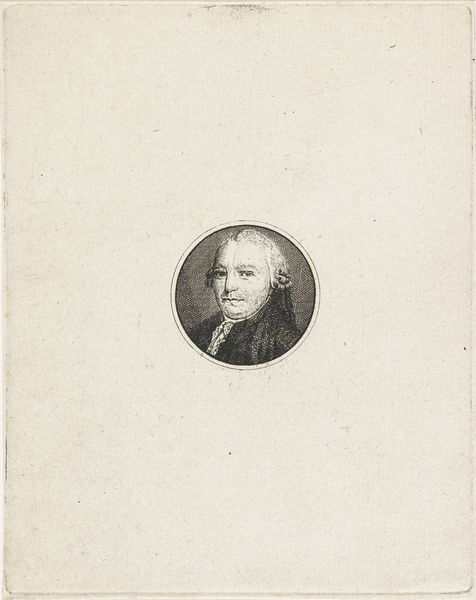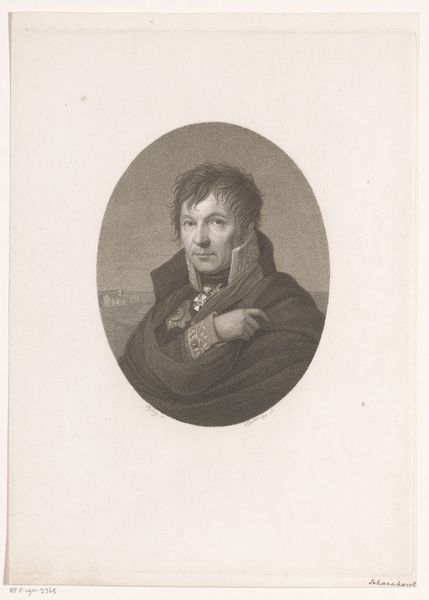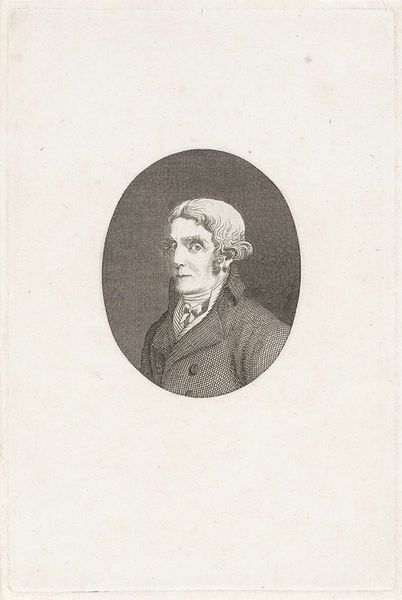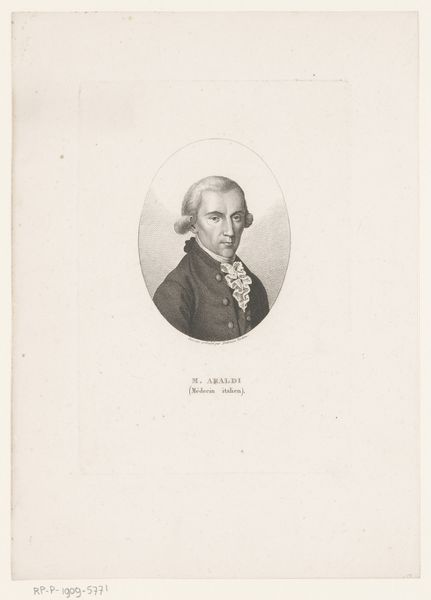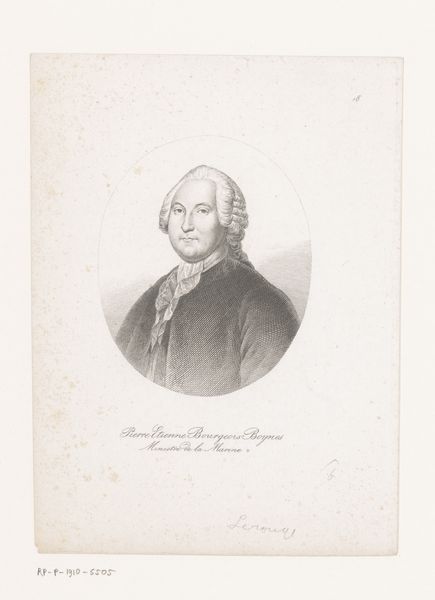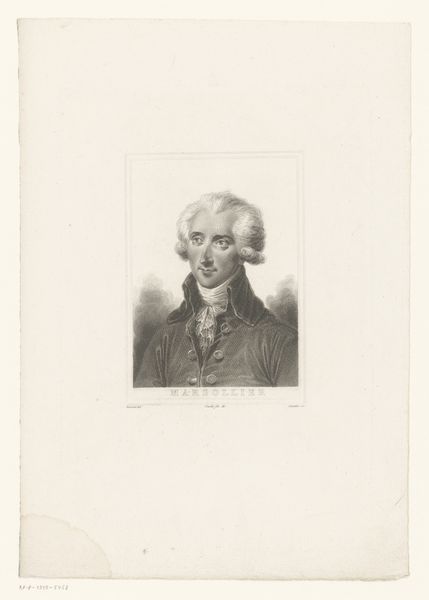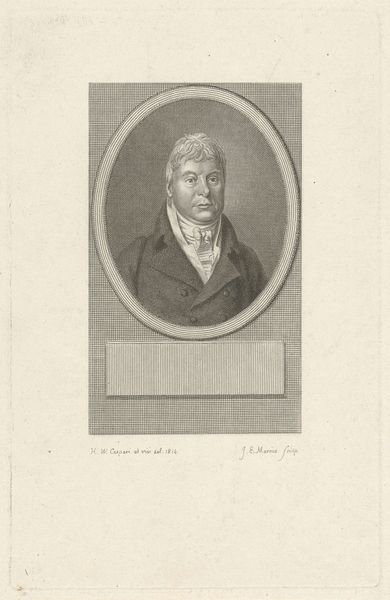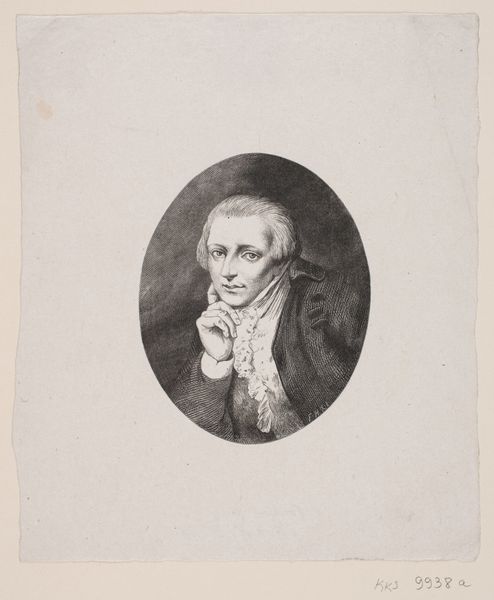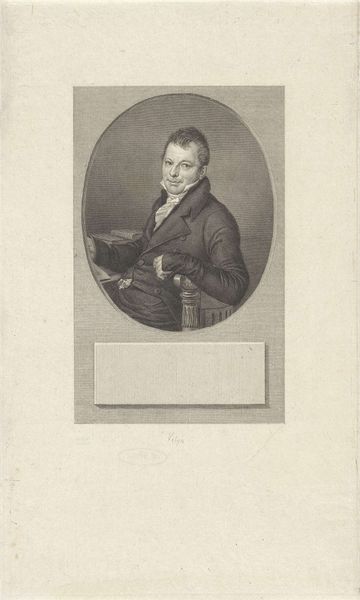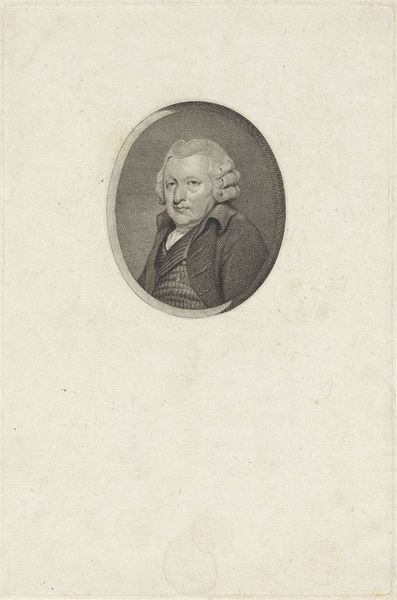
drawing, pencil
#
portrait
#
drawing
#
neoclacissism
#
pencil drawing
#
pencil
Dimensions: height 224 mm, width 153 mm
Copyright: Rijks Museum: Open Domain
Editor: Here we have Ludwig Gottlieb Portman’s pencil drawing, *Portrait of the Poet Cornelis Loots,* from 1802. It’s such a precise, elegant rendering of this man, almost austere in its simplicity. What jumps out at you when you look at it? Curator: The oval frame immediately evokes classical cameos, miniature portraits often imbued with symbolic power. The neoclassical style sought to emulate the virtues of antiquity – reason, order, and stoicism. Note how the subject's gaze is direct but not confrontational; there's a quiet dignity. Editor: I see what you mean. So, what would a portrait like this communicate to its intended audience back then? Curator: Think of clothing as a signifier, just like specific attributes in religious paintings. Loots’ clothing—the high collar and dark coat—speak to a man of intellectual standing, of course, but perhaps also aligning him with enlightened circles who favoured republican ideals in contrast to elaborate aristocratic fashion. What about the seemingly simple medium—pencil—do you think that also carries weight? Editor: That’s a good point. Using pencil rather than paint… maybe it suggests authenticity, a focus on direct representation? Perhaps a contrast to the opulence of previous eras? Curator: Precisely. The pencil itself allows for precise linework and subtle gradations, contributing to this air of meticulous observation and intellectual honesty. The symbol of the Poet and how society might view someone involved in the cultural memory and the social critique it carries through. Editor: This has really opened my eyes to how much meaning can be packed into what I initially perceived as just a simple portrait. Curator: Exactly! By understanding the visual vocabulary of a period, we unlock a deeper connection to the people and ideas that shaped it.
Comments
No comments
Be the first to comment and join the conversation on the ultimate creative platform.


